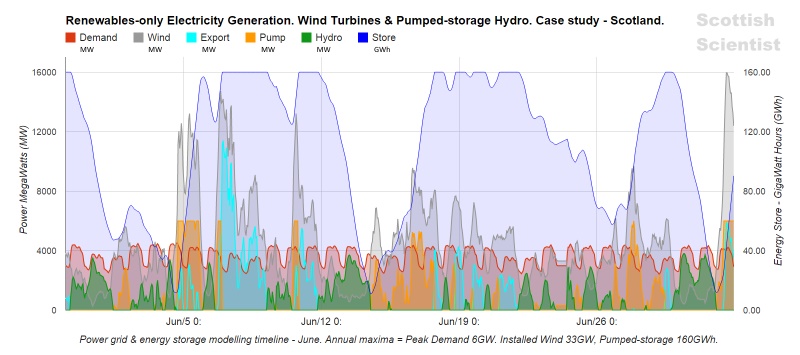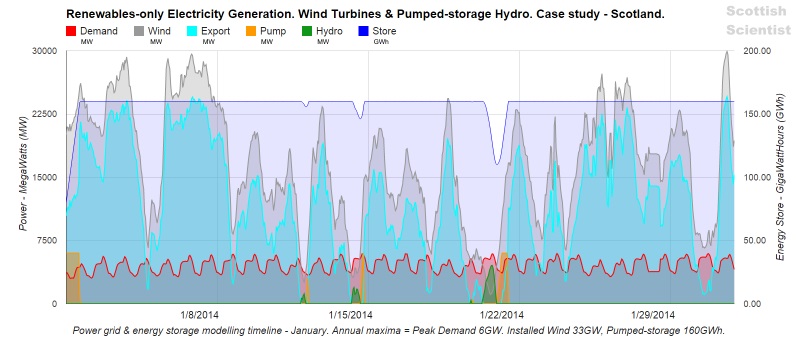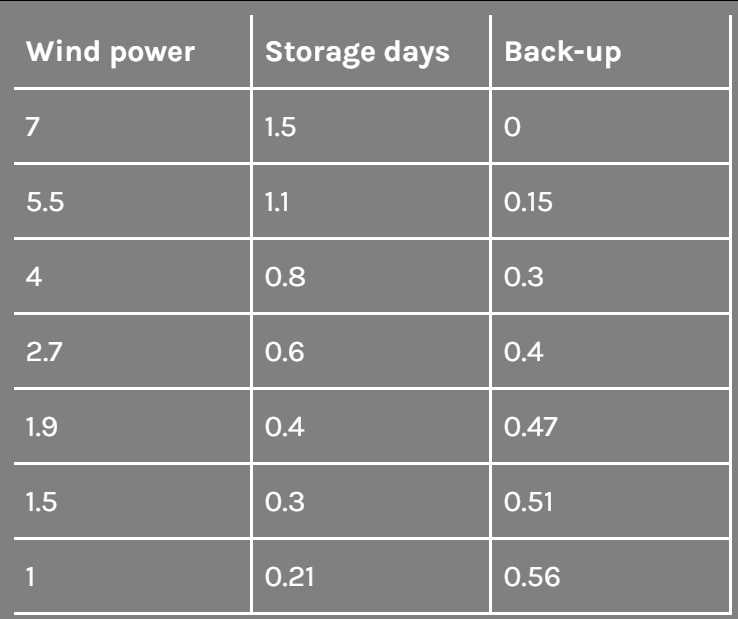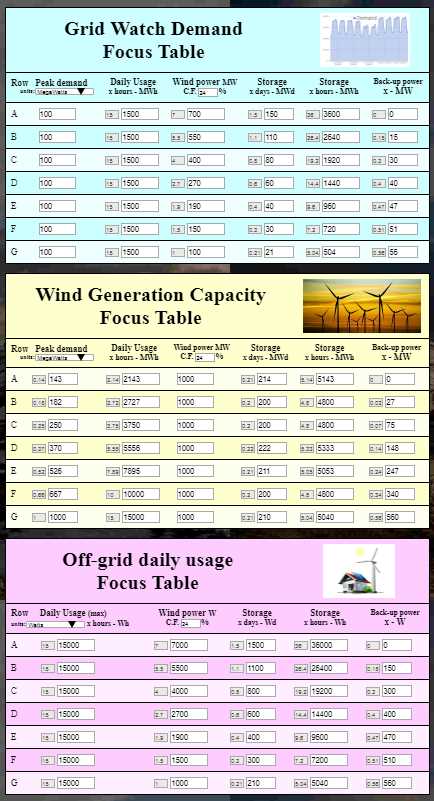Scottish Scientist
Registered Member
This Scottish scientist produced a spreadsheet model of an electricity generating system composed primarily of wind turbines backed up with pumped-storage hydro-electricity schemes. Such modelling can predict how much wind power and pumped-storage energy capacity should be installed for satisfactory renewables-only generation.

Click to view a larger image
https://scottishscientist.files.wordpress.com/2015/04/windpumpedstorage_june.jpg
The spreadsheet line graph above plots power & energy variables for the time-line modelled –
Modelling assumptions for this graph –

Click to view a larger image
https://scottishscientist.files.wordpress.com/2015/04/windpumpedstorage_january_b1.jpg
A real electricity system which had adopted wind power and pumped-storage hydro for future electricity generation would inherit existing power stations which could continue to serve on stand-by as a further back-up, reserve or emergency power supply.

Click to view a larger image
https://scottishscientist.files.wordpress.com/2015/04/windpumpedstorage_june.jpg
The spreadsheet line graph above plots power & energy variables for the time-line modelled –
- curves for power exported, demanded, from wind, for pumping, from the hydro-turbine &
- a curve for the energy stored by water pumped into the upper reservoir.
Modelling assumptions for this graph –
- the peak demand in Scotland in 2014 was 6GW
- an installed maximum wind turbine power in Scotland of 33GW = 5.5 x peak demand
- an installed pumped-storage hydro energy capacity in Scotland of 160GWh = 1.11 peak-demand-days
- the pumps have a maximum power consumption of 6GW = peak demand
- the hydro-turbines have a maximum power output of 6GW = peak demand
- the pumps and the hydro-turbines both have an efficiency of 88%
- no other power stations are generating power.

Click to view a larger image
https://scottishscientist.files.wordpress.com/2015/04/windpumpedstorage_january_b1.jpg
A real electricity system which had adopted wind power and pumped-storage hydro for future electricity generation would inherit existing power stations which could continue to serve on stand-by as a further back-up, reserve or emergency power supply.
Last edited:




